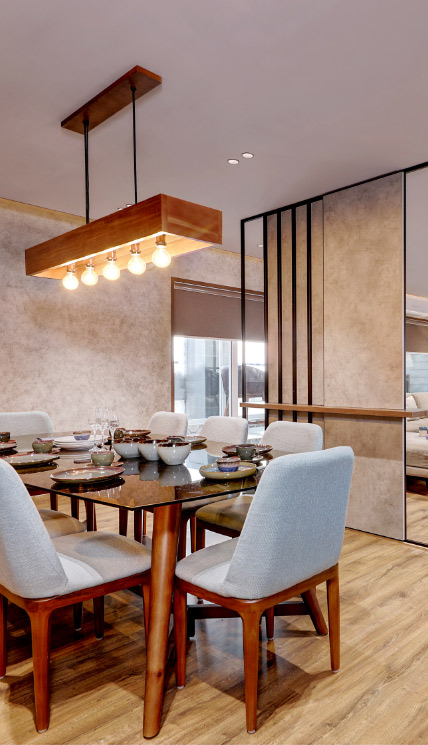Change Your Home With Necessary Principles of Interior Design and Looks
By recognizing the influence of shade theory and the value of texture and patterns, one can produce rooms that are not only aesthetically appealing however likewise deeply individual. Achieving this stability involves even more than simple decor; it encompasses a strategic arrangement and an eager understanding of just how each component communicates within an area.
Comprehending Shade Theory
Comprehending the principles of color theory permits developers to create spaces that reverberate psychologically with passengers while satisfying functional requirements. Each category plays an essential role in developing consistency within an area.
The mental impact of shades is profound; cozy tones such as reds and oranges evoke energy and warmth, while amazing tones like blues and environment-friendlies promote peace and tranquility. Moreover, using corresponding colors boosts aesthetic interest, developing striking contrasts that can raise a room's allure.
Neutral shades, on the other hand, work as a flexible background, enabling other layout elements to beam. It is necessary to consider variables such as lighting and the space's objective when choosing a shade palette, as these can modify the understanding of colors throughout the day.
Eventually, a well-considered shade system can change a space, promoting a feeling of comfort and style that straightens with the citizens' preferences. Mastery of color concept is, therefore, a vital skill for any kind of indoor designer aiming to produce harmonious and inviting atmospheres.
Attaining Equilibrium in Design
Just how can designers accomplish a feeling of stability in their spaces? Accomplishing equilibrium in layout is basic to producing unified insides. Developers can make use of three primary types of balance: in proportion, asymmetrical, and radial. Balanced balance entails preparing aspects evenly around a main factor, cultivating a sense of order and serenity. This type frequently features pairs of furnishings or artwork, enhancing aesthetic stability.
Asymmetrical balance, on the other hand, relies upon differing elements that still achieve a cohesive appearance. This strategy permits for even more dynamic and casual arrangements, giving passion while preserving balance. By thoroughly selecting varying dimensions, shades, and structures, designers can develop an aesthetically engaging area that feels well balanced yet energetic.
Radial balance emphasizes a central focal point with elements emitting outside. This style is typically seen in round designs, where furniture and decoration create a cohesive surround that attracts the eye inward.
Inevitably, accomplishing equilibrium requires thoughtful factor to consider of scale, proportion, and the relationships between components. miami luxury interior design. By skillfully using these equilibrium principles, developers can transform rooms right into environments that feel both aesthetically pleasing and functionally harmonious, boosting the general experience for passengers
Significance of Spatial Recognition

An browse around this web-site eager feeling of spatial recognition allows developers to identify centerpieces within a room, directing the audience's attention to essential functions while preserving a general sense of unity. It likewise assists in the strategic placement of lights, which can considerably affect the understanding of room and state of mind. Understanding spatial partnerships makes it possible for the designer to provide to the certain needs of inhabitants, making certain that each location serves its designated function without compromising aesthetics.
Inevitably, spatial understanding is important for taking full advantage of the possibility of any kind of indoor space. By very carefully considering the interplay in between dimensions, format, and feature, developers can create settings that not only fulfill useful requirements yet also stimulate a feeling of comfort and beauty, improving the overall living experience.
Integrating Texture and Patterns
Accepting a varied variety of appearances and patterns can substantially enhance the visual and responsive allure of an interior room. The tactical usage of various products-- such as timber, steel, fabric, and rock-- creates depth and passion, making a room feel extra inviting and vibrant. Incorporating smooth surface areas with rough appearances can establish a balance that draws the eye and engages the senses.
When incorporating patterns, take into consideration both scale and repetition. Big patterns can serve as centerpieces, while smaller sized, subtle designs can match other aspects without overwhelming the space. Layering patterns, such as pairing floral pillows with striped throws, adds complexity and a sense of harmony if performed thoughtfully.
It is additionally important to preserve a natural shade combination, guaranteeing that textures and patterns go to this site interact instead than contend for attention. By picking a couple of key textures and patterns, you can develop a combined aesthetic that mirrors your personal style while improving the general ambiance of the space. Inevitably, the careful incorporation of these aspects can transform an ordinary space right into an innovative atmosphere abundant with personality and warmth.
Customizing Your Room
Creating a space that shows your individuality is vital to accomplishing a really inviting setting. Customization in indoor layout enables you to instill your unique style and interests into your home, changing it from a plain shelter right into a refuge that speaks to who you are. Begin by choosing a shade scheme that reverberates with your feelings-- vibrant shades can stimulate, while soft tones offer tranquility.
Integrate artwork and design that mirror your interests, whether it be traveling, nature, or abstract principles. Displaying personal collections, such as publications, pictures, or keepsakes, can evoke treasured memories and develop centerpieces within a space. Furthermore, take into consideration customizing functional items, like upholstered furniture, to line up with this contact form your visual preferences.

Conclusion
In final thought, the improvement of a home with the important concepts of interior style and aesthetics demands an extensive understanding of shade concept, balance, spatial awareness, structure, and personalization. Each element adds dramatically to developing a harmonious and functional living setting - miami luxury interior design. By attentively integrating these concepts, individuals can boost the visual allure and emotional resonance of their rooms, inevitably fostering a home that reflects distinct identifications while supplying convenience and usefulness